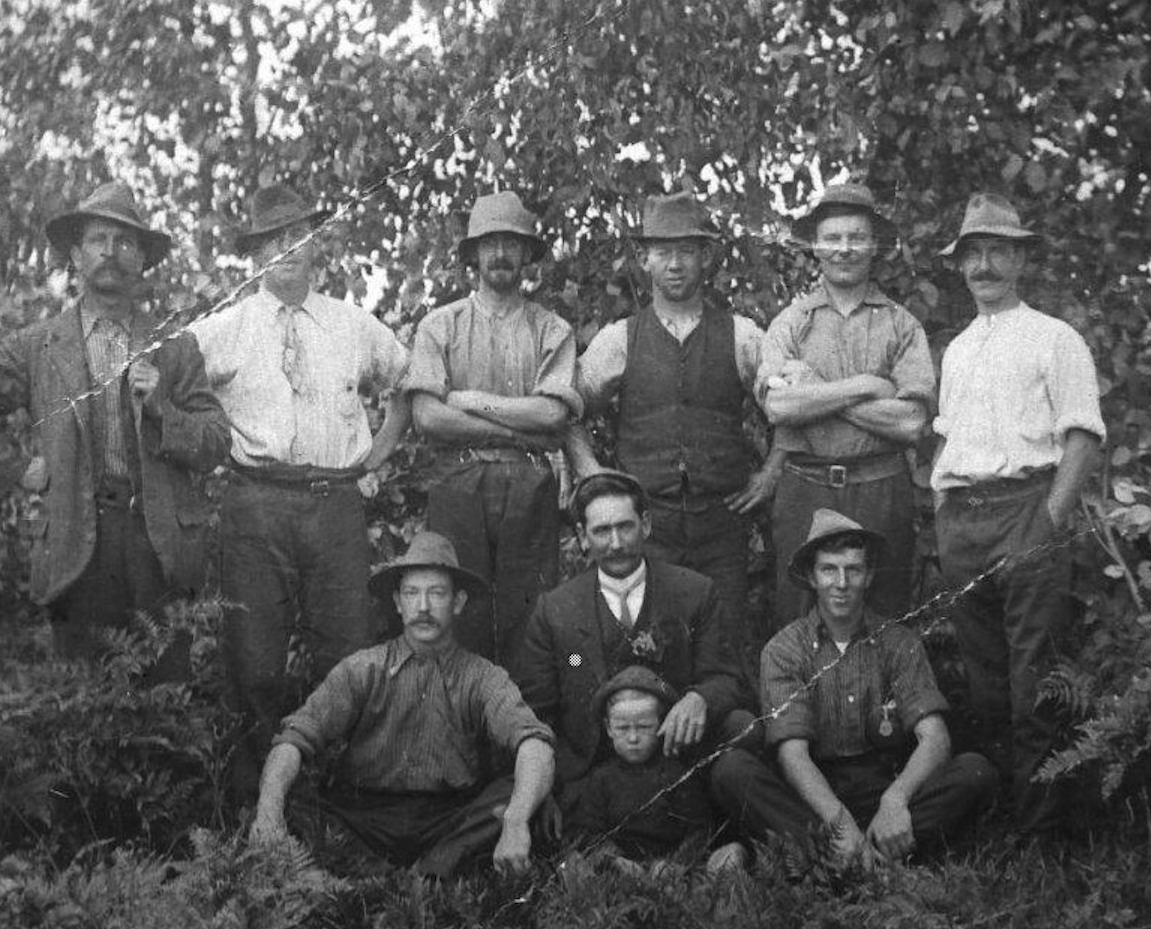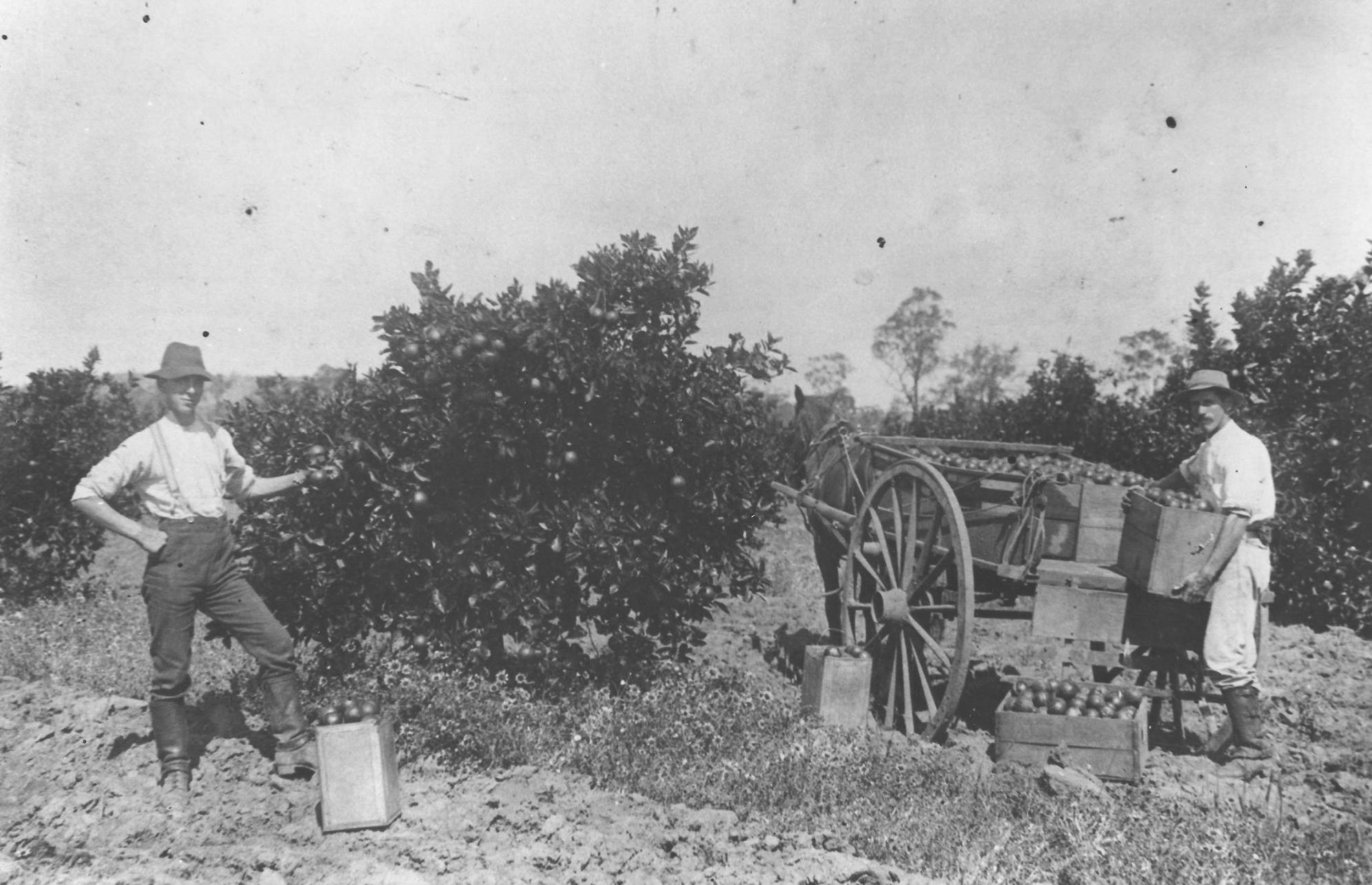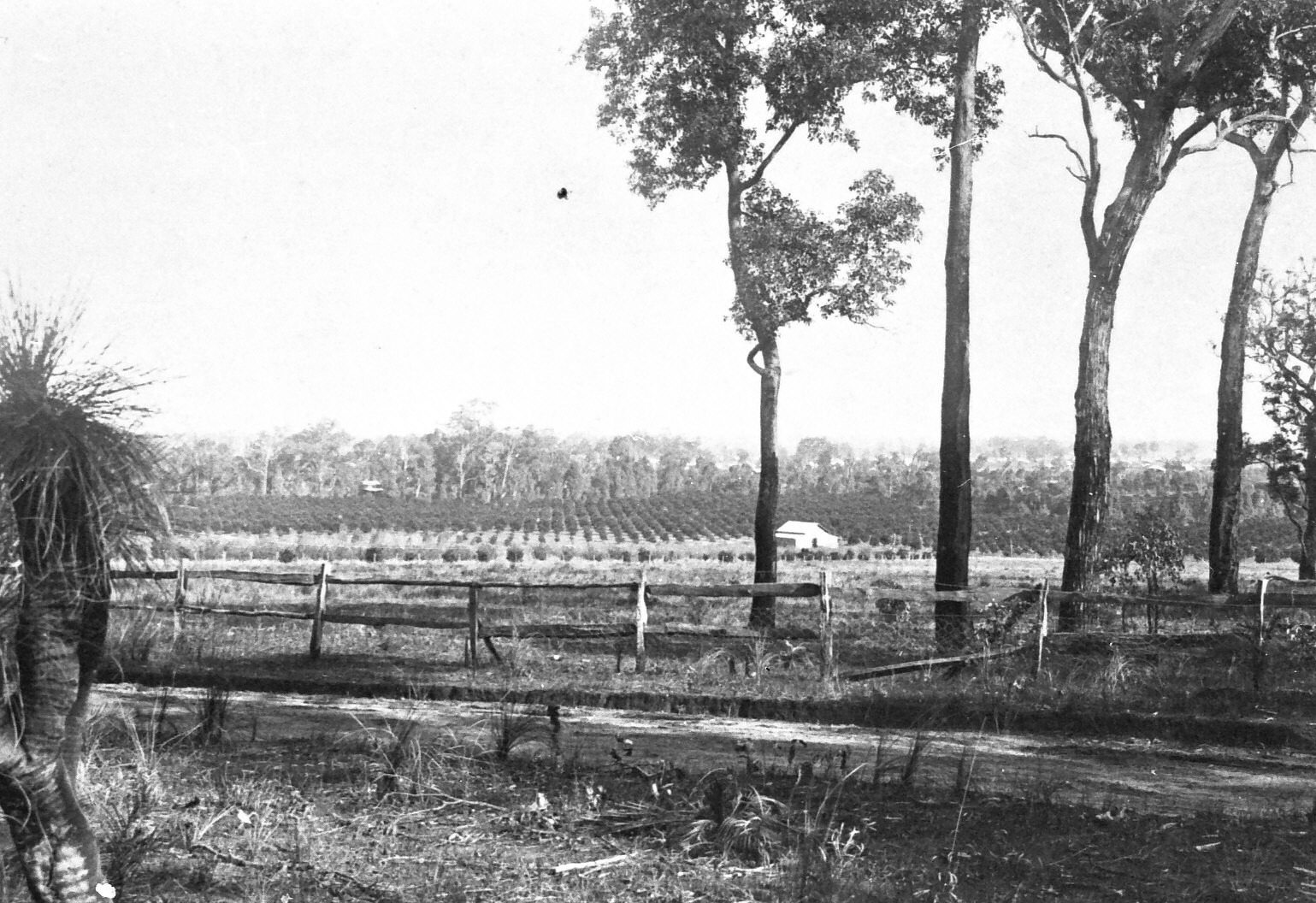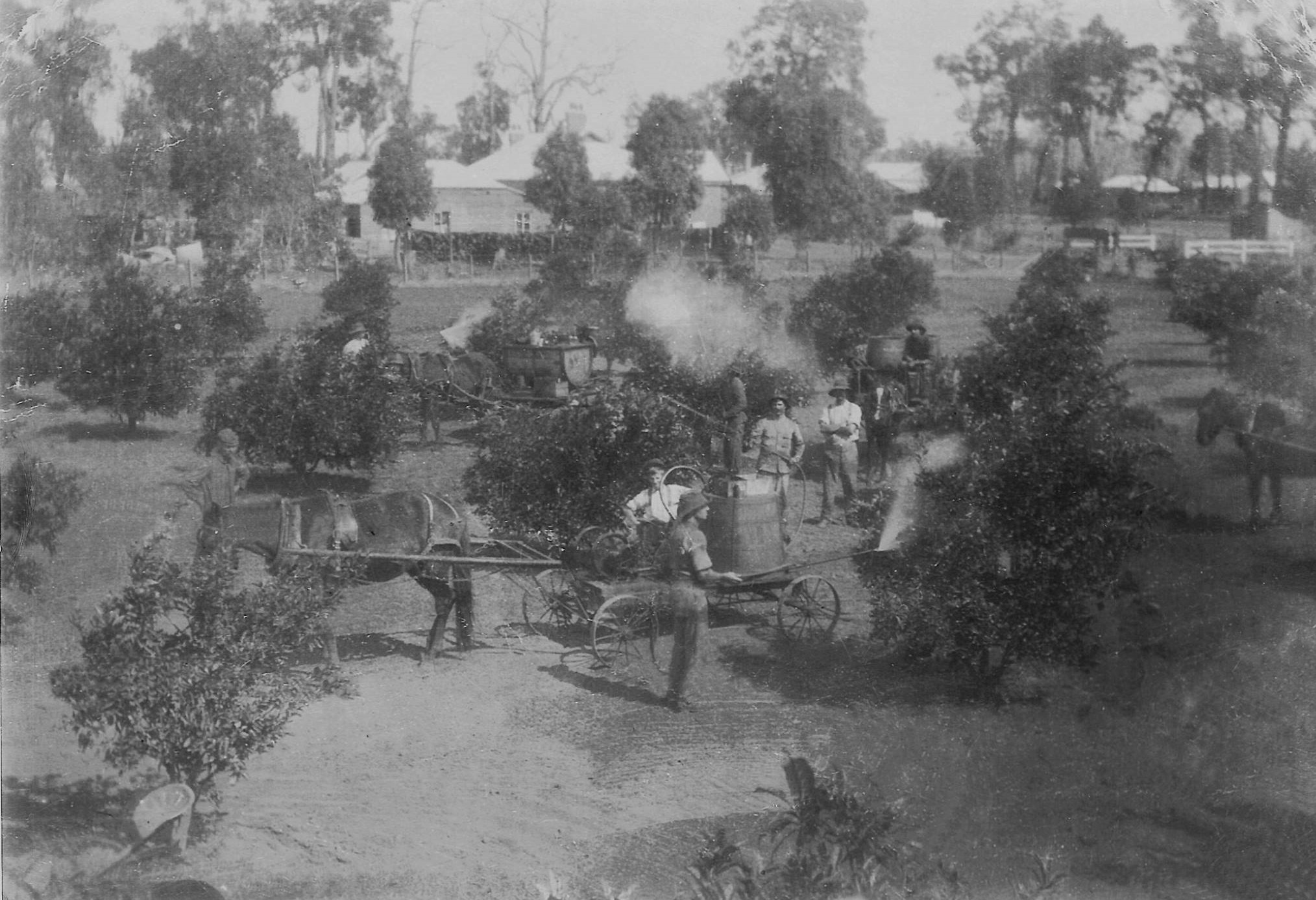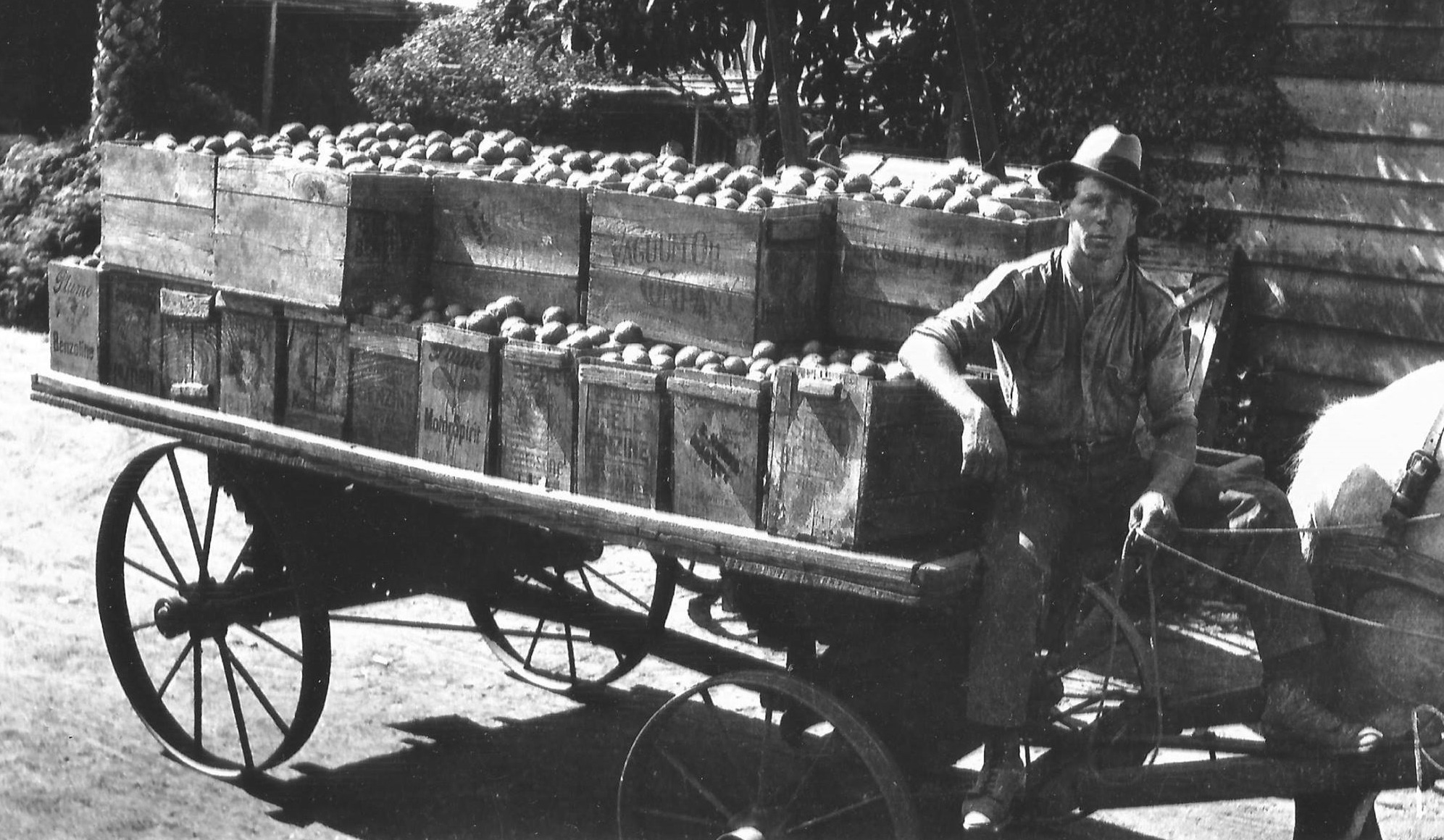The development of Harvey’s Famous citrus industry began in 1896 with the subdivision of the Korijekup Estate, owned by Drs Hayward and Harvey, into small 10-acre blocks. The fertile soil and favourable climate soon attracted nurserymen to the area.
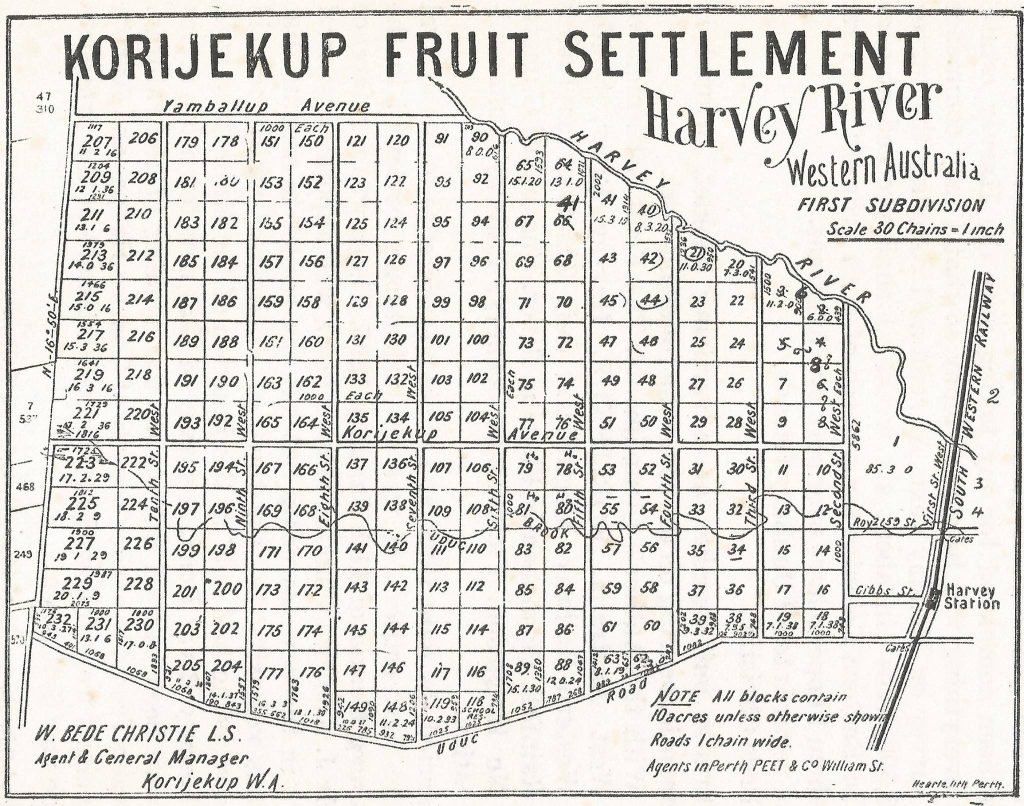
Surveyed by William Bede Christie, the Fruit Settlement was based on leading east coast citrus regions, Mildura and Renmark. Christie also developed a booklet, Korijekup – The Fruit Settlement of West Australia, singing the praises of the area.
Rich soil, picturesque scenery, eminently adapted to the culture of citrus fruits.
The opening of the South West railway line and the Harvey Station in 1893 also made it possible for Harvey nurserymen to compete with citrus nurseries around Perth.
The first to come was Jacob Hawter, a well-established nurseryman in the Helena Valley and Mullalyup. Many investors were Perth professionals, who became absentee owners, employing others to clear and establish their orchards.
Fielder brothers, Charles, Daniel, Thomas and Arthur Fielder were all employed in Hawter’s Nursery. The two oldest brothers then went on to establish their own nursery, one of the largest in the district. Other nurserymen attracted to Korijekup included George Atkins of Uduc Brook Nursery, John Hepton of Hepton’s Nursery, and Robert Montagu Boyce of Harvey Nursery. As well as providing citrus and deciduous stock, some specialised in providing flowering plants and vegetable seedlings.
Some 15 years later, many orchardists pulled out their orange trees as the local supply market collapsed under wartime conditions when shipping was not available and there was a lack of labour. Many orchards also responded badly to the heavy watering from the irrigation channels. Furthermore, Perth politicians, chasing votes, were creating pressure to increase supplies of dairy produce. Though dairy grew in the district, Harvey remained a leading citrus-growing region of Western Australia.
Meet William Bede Christie
A key figure in the fruit industry development in the settlement of Harvey, William Bede Christie was a horticulturist, surveyor, author, lecturer, business proprietor, student of astronomy and authority on Egyptology.
Employed by Dr Harvey, he arrived in 1895 to manage and promote the settlement, including surveying and lecturing on fruit growing. With lengthy experience in the fruit growing industry in Mildura and Renmark, it was his intention to settle fifty families of fruit growers from ‘the Eastern Colonies’.
His daughter Katherine and son-in-law, Alexander Murray, joined him later. Murray built the property Riverton, which was also used as Christie’s headquarters. Before arriving in Harvey, Murray had been co-owner and journalist of the Irrigationalist newspaper in Wentworth NSW and founder of the Swan Hill Guardian.
Unfortunately, the relationship between Dr Harvey, Dr Hayward and Christie soured after Christie had sold 500-600 acres, and no titles were issued. This subsequently ended in a lengthy battle in the Supreme Court in 1900, where Christie eventfully won a settlement of £1000 sterling.






